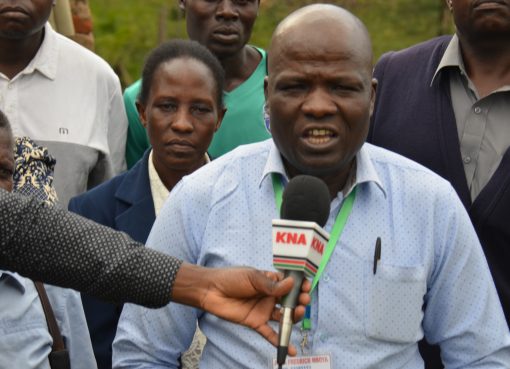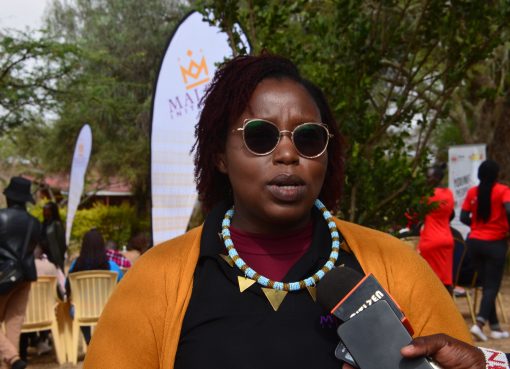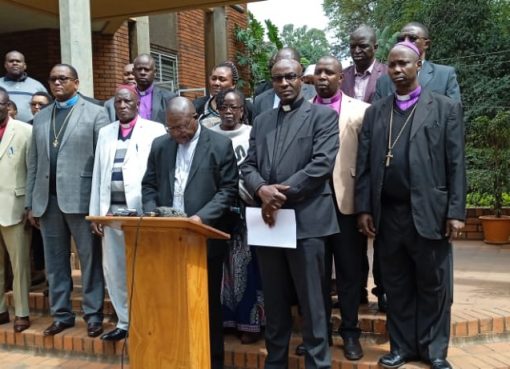An environmental lobby group has called on the government not to backtrack on the second phase of evictions, aimed at ridding Maasai Mau Forest of over 10,000 illegal settlers.
The Executive Director Multi Touch International, Christine Wangare warned that if the water tower is not restored within the next five years, livelihoods of over 10 million people in East Africa and far afield in Egypt were at stake.
“This is a natural resource that no single ethnic group can lay claim to. The Mau forest debates that have been raging have no substance except heavy political undertones. Nobody is flouting the law by conserving the environment,” she said.
Wangare spoke as the Nakuru Women Representative, Liza Chelule called for more consultations on resettlement of the evictees before the process is carried out.
The MP opposed the looming evictions, on grounds that if the exercise is allowed to proceed, some 8,000 school going children, including 1,000 candidates set to sit their national exams at the end of the year, will suffer.
Last week, the State dealt a blow to opponents of the second phase of evictions when it published in the dailies 1,274 title deeds in the Mau complex for cancellation.
Ms Chelule maintained that the targeted evictees were holding legitimate land ownership documents issued by the state and should not be victimized for other people’s misdeeds.
“The documents canceled by courts were issued after due diligence and process had been conducted by state agents. Those people in Mau are not to blame” stated the lawmaker.
In June last year, the Ministry of Lands moved to court seeking orders to nullify the titles which were “irregularly and unlawfully issued”.
Prayers were granted two months ago with the court directing the ministry to publish the titles, their owners and acreage they acquired.
Ms. Wangare said the government should not be bothered with political noise stating that “It was unfair for politicians to play the ethnic card to achieve individual whims at the expense of a national resource.”
The first phase of the evictions that saw 10,000 illegal settlers evicted was centred in Reiya group ranch.
The second phase has Nkoben, Ilmotiok and Ololunga on the radar. The others are Enokishomi, Enoosokon, Nkaroni and Sisian.
The Multi Touch International boss however, said the evictions should be conducted in a humane manner.
She asked politicians to keep off the exercise and maintained that the water tower is not about tribes and pledged that the restoration process would go on as planned by the relevant authorities.
During the first phase of the eviction in July 2018, about 7,700 people were evicted from the forest land which saw over 12,000 acres of the forest reclaimed.
The eviction birthed heightened rhetoric from leaders of the affected communities who preoccupied themselves in heated accusations and counter-accusations.
The Mau is the largest water tower in the country supporting millions of human life and wildlife in Kenya and beyond.
On July 25, Tobiko vowed to ensure the evictions go on as planned, saying that no amount of intimidation would stop it.
“Water towers are our lungs and the rivers flowing are our bloodstream. Why would the environment become a political question? It does not know about tribes; the environment does not care,” he said.
In a document titled, ‘Kenya Water Towers Status Report 2018 the government noted that between 1990 and 2016, there was drastic change in the landscape of East Mau.
Within the gazetted forest zone, forestland decreased by about 40 per cent from 54,804 ha in 1990 to 21,740 ha in 2016. Trees were cut down to give way to grazing land, and cultivated crops.
“The threats are mainly caused by rapid population growth which intensifies the pressure on the limited water tower natural resources thereby accelerating their eventual degradation. In addition, there is change in land use and land cover due to cutting of trees for firewood, charcoal, opening land for cultivation, occurrence of forest and bush fires and excision of gazetted forest to create human settlement” states the Kenya Water Towers Status Report 2018 report.
As a result of conversion of forest lands to open grasslands for cultivation the report notes that not only has the balanced nature of the ecosystem been upset but also many of the rivers from the Mau forest complex started to dry up as a result leading to a national outcry.
The tower forms the upper catchment for the main rivers in Rift Valley and Western Kenya that include Sondu, Mara, Ewaso Ngiro, Molo, Njoro, Nderit, Makalia and Naishi which feed Lake Victoria, Lake Baringo, Lake Nakuru and Lake Natron. Rivers such as Yala, Nyando Sondu and Nzoia also rise in the Mau.
By Anne Mwale




